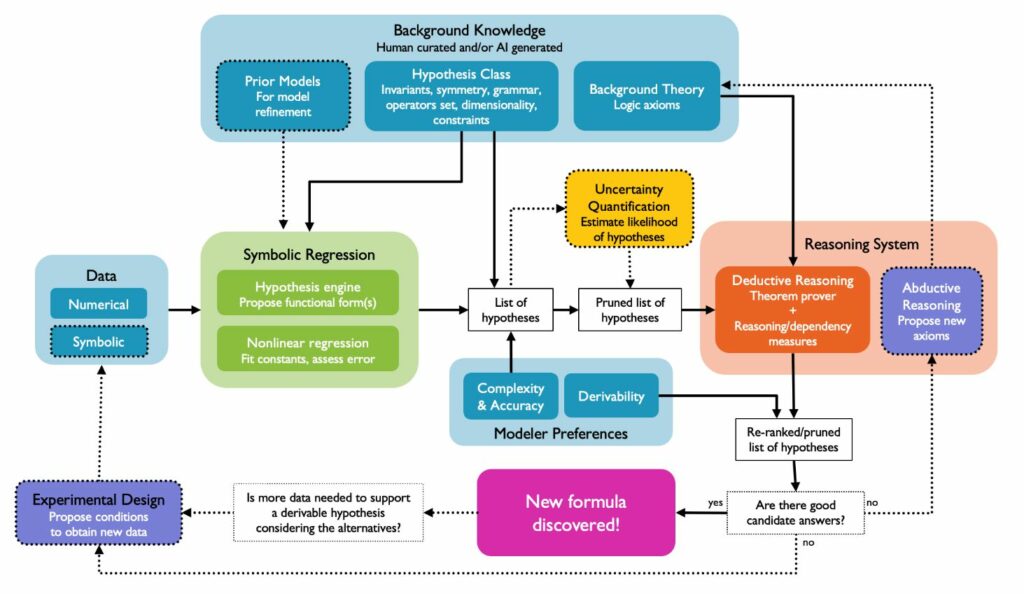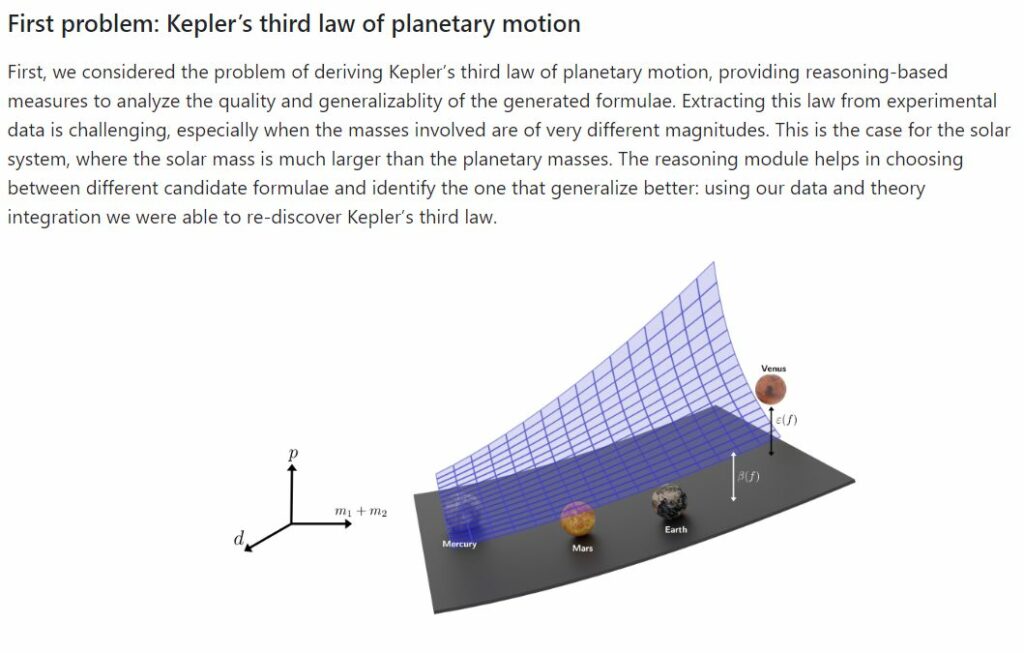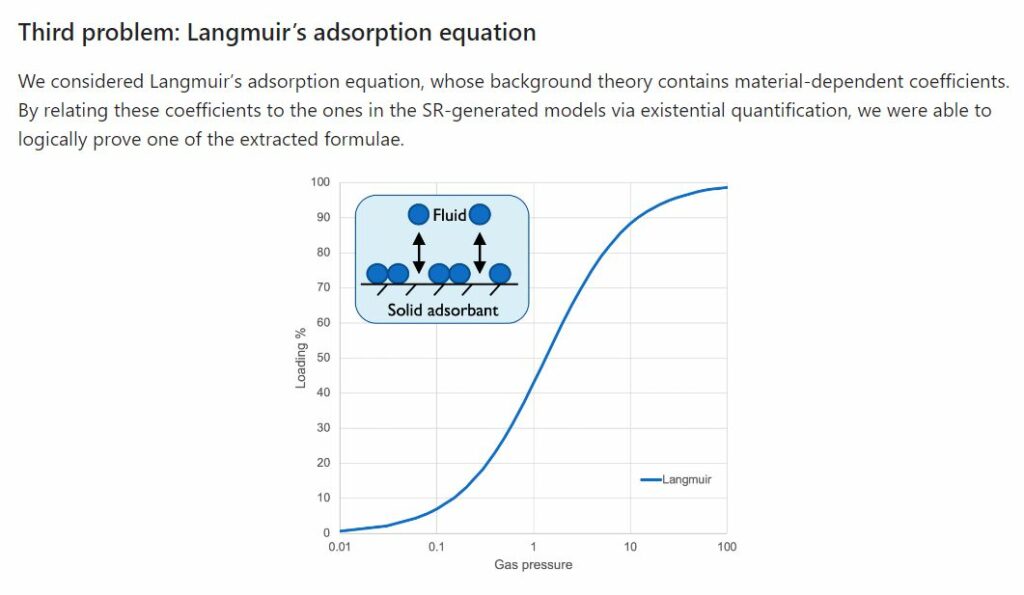The new AI Scientist showed how well it understood Kepler’s third law about how planets move, Einstein’s relativistic time-dilation law, and Langmuir’s equation about how gases stick to surfaces.
A paper analyzing the behavior of gas molecules adhering to a solid surface was published by Irving Langmuir, an American chemist, in 1918. His equations, which outline the quantity of gas that adheres to the surface at a specific pressure, were formulated after conducting meticulous experiments and guided by his belief that solids provide distinct locations for gas molecules to occupy.
Around a century after its initial publication, an “AI scientist” created by a team of researchers from IBM Research, Samsung AI, and the University of Maryland, Baltimore County (UMBC) has replicated a critical component of Langmuir’s Nobel Prize-winning research.
Additionally, the system, functioning as an artificial intelligence (AI) scientist, has resurfaced Kepler’s third law of planetary motion, which enables the calculation of orbital time between two space objects based on their distance, and has generated an accurate estimate of Einstein’s relativistic time-dilation law, demonstrating that time moves slower for rapidly moving entities.
The Defense Advanced Research Projects Agency (DARPA) supported the research. Today, a report summarizing the findings was published in the journal Nature Communications.
A reasoning machine-learning tool
The latest addition to the collection of recently developed computing tools, including AI Feynman, that strive to accelerate scientific breakthroughs is the new AI scientist, nicknamed “AI-Descartes” by the researchers. These systems are based on the principle of symbolic regression, which discovers equations that fit data. By employing fundamental operators like addition, multiplication, and division, the systems have the ability to generate hundreds to millions of potential equations and search for those that most precisely depict the associations within the data.
According to the paper’s first author, Cristina Cornelio, a research scientist at Samsung AI in Cambridge, England, AI-Descartes presents several advantages compared to other systems. However, the system’s most prominent feature is its capacity for logical reasoning. If multiple equations adequately match the data, the system can determine which equation fits best with the existing scientific theory. Unlike generative AI programs such as ChatGPT, which have limited logical abilities and occasionally make mistakes in basic mathematics, the ability to reason distinguishes AI-Descartes from such programs.

“In our work, we are merging a first-principles approach, which has been used by scientists for centuries to derive new formulas from existing background theories, with a data-driven approach that is more common in the machine learning era,” Cornelio adds. “This combination allows us to take advantage of both approaches and create more accurate and meaningful models for a wide range of applications.”
The name “AI-Descartes” is a tribute to René Descartes, a mathematician and philosopher from the 17th century who postulated that a small number of fundamental physical laws could explain the natural world and that logical deduction was essential to scientific breakthroughs.

Able to handle real-world data
AI-Descartes demonstrates exceptional performance with noisy, real-world data, which conventional symbolic regression programs can struggle with as they may prioritize fitting every irregularity in the data over capturing the actual signal. Additionally, the system performs remarkably well with small data sets, successfully identifying dependable equations even when presented with as little as ten data points.
The requirement to identify and encode associated background theory for open scientific questions could potentially hinder the adoption of tools like AI-Descartes for frontier science. To overcome this obstacle, the team is generating new datasets that contain both real measurement data and associated background theory.
By doing so, they aim to refine their system and experiment with it in new domains. Additionally, they intend to develop computer programs that can read scientific papers and autonomously construct the background theory in the future.



“In this work, we needed human experts to write down, in formal, computer-readable terms, what the axioms of the background theory are, and if the human missed any or got any of those wrong, the system won’t work,” adds co-author Tyler Josephson, assistant professor of Chemical, Biochemical and Environmental Engineering at UMBC. “In the future,” he says, “we’d like to automate this part of the work as well, so we can explore many more areas of science and engineering.”
Josephson’s investigation into AI tools for chemical engineering advancement is driven by this objective.
At the end of the day, the team believes that its AI-Descartes, like the actual one, may serve as an inspiration for a useful new approach to research.
“One of the most exciting aspects of our work is the potential to make significant advances in scientific research,” Cornelio adds.
Source: 10.1038/s41467-023-37236-y
Image Credit: Getty
